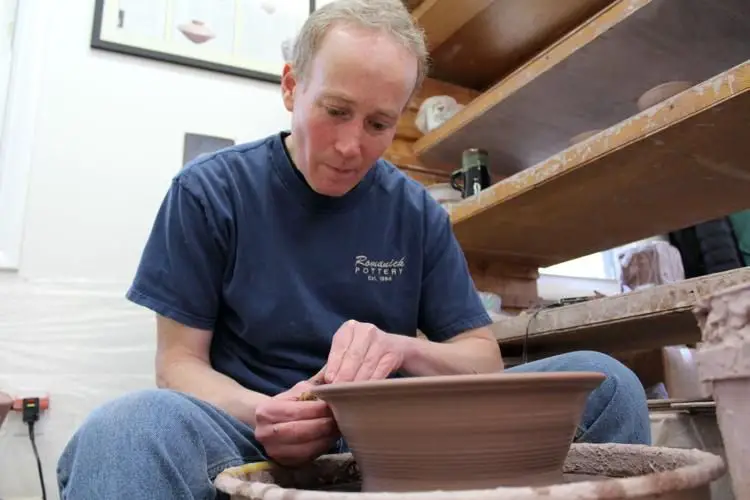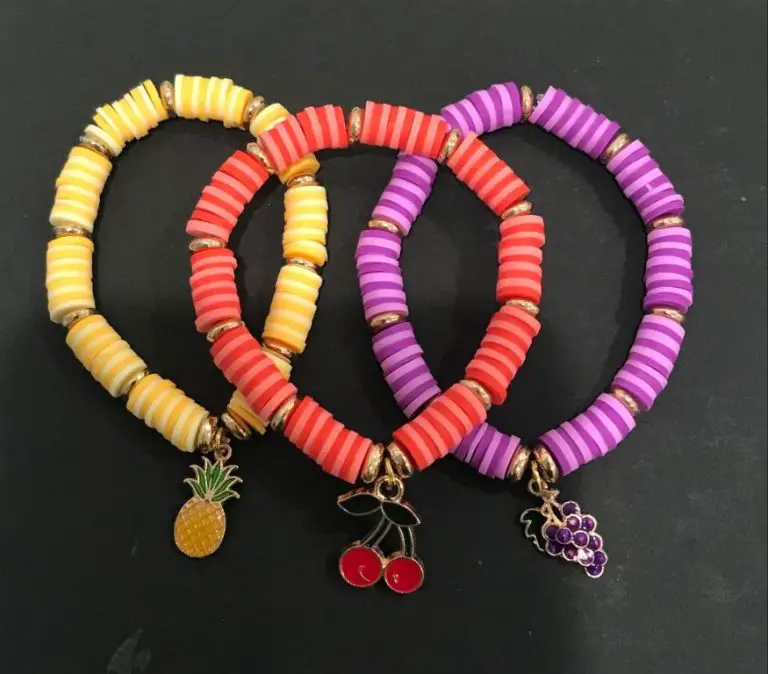Who Are The Current Ceramic Artist?
Ceramic art has a rich history dating back thousands of years, but it continues to evolve thanks to contemporary ceramic artists. Ceramics today encompasses a wide range of materials, techniques, and artistic styles. While pottery and vessels remain a core part of ceramic art, contemporary ceramicists also create sculptural works, installations, and conceptual pieces. The field is being pushed forward by established ceramic artists as well as emerging voices.
Some of the hallmarks of ceramic art today include the use of innovative materials and firing methods, mixed media incorporation, minimalist and abstract styles, and addressing social issues. Ceramic artists today pull inspiration globally, integrating Japanese, Chinese, and Native American influences among others. Overall, the ceramic medium allows artists great flexibility for both form and surface design.
This article will explore major ceramic artists working today, looking at pioneers in the field as well as up-and-coming voices. It will examine new directions in ceramic materials, firing techniques, and conceptual approaches. The aim is to provide an overview of contemporary ceramic art and recognize leading talents shaping the field.
Notable Contemporary Ceramicists
Some of the most acclaimed ceramic artists working today include:
Naama Mor is an Israel-based ceramicist known for her colorful animal sculptures including parrots, flamingos, and elephants. Her works combine wheel throwing and hand building techniques using bright glazes and textures (Exploring the Works of Famous Ceramic Artists Throughout History).
Bai Ming from China has revived traditional Chinese porcelain techniques in contemporary sculptures. He employs symbolic imagery and unique glazing effects in his figurative works (Bai: The New Language of Porcelain in China).
Viola Frey is an American sculptor known for her larger-than-life ceramic figures of people engaged in everyday activities. She uses a wide color palette and exaggerated features to convey humor and social commentary.
Magdalene Odundo is a Kenyan-British ceramicist recognized for her handbuilt vessels with undulating shapes. She draws inspiration from African culture and uses burnishing techniques to create sensuous surface textures.
Arlene Shechet creates abstract ceramic sculptures by combining thrown, handbuilt, and cast forms. Her works integrate multiple processes like paperclay, wood, textiles, and found objects.
Other leading ceramic artists today include Grayson Perry, Cliff Lee, Jun Kaneko, Ron Nagle, Shio Kusaka, Jennifer Lee, and Yeesookyung.
Emerging Ceramic Artists to Watch
The field of ceramic art is constantly evolving and new talents continue to emerge. Here are some exciting up-and-coming ceramic artists to keep an eye on:
Joey Kirkpatrick and Flora Mace (USA) – This husband-wife duo create provocative ceramic sculptures that explore the human form and human relationships.
Jessica Stoller (USA) – Known for disturbing porcelain figurines that blend human and animal features, Stoller pushes the boundaries of ceramic art.
Hana Karim (UK) – Karim experiments with clay extrusion to produce vibrant, colorful, organically-shaped vessels and sculptures.
Yeesookyung (South Korea) – Her Translated Vases feature broken, cast-off pieces of pottery glued back together with gold, evoking ideas of damage and repair.
Ayumi Horie (USA) – Known for whimsical pots and kitchenware featuring decals and brightly colored glazes. Horie also founded the Arthouse residency program for emerging ceramic artists.
Innovations in Ceramic Materials and Techniques

Ceramic artists today are exploring innovative new materials and techniques to push the boundaries of what’s possible with clay. Some key innovations include:
Alternative clays – Artists are experimenting with alternative clays beyond traditional stoneware and porcelain, such as paper clay, terra sigillata, and unfired clays. These open up new possibilities for large-scale, lightweight, or ephemeral artworks.Innovations in Ceramic Art
3D printing – 3D printing allows artists to prototype and produce intricate, complex forms and textures that would be difficult or impossible to make by hand. Printed components can also be combined with hand-built parts.48 Innovations in Ceramic Art – Cambridge ideas
Digital technology – Some ceramicists are incorporating digital technology like LEDs, video projections, and responsive components to create interactive, multimedia artworks.
Mixed media – Combining ceramics with other materials like wood, metal, plastics, and found objects allows for greater conceptual depth and complexity in ceramic sculpture.
As technology continues advancing rapidly, ceramic artists have an expanding palette of materials and methods to draw from in pursuing their creative visions.
Notable Ceramic Art Schools
Some of the top ceramics programs in the United States are located at prestigious art schools and universities. These schools have exceptional facilities, renowned faculty, and produce many leading ceramic artists.
The Alfred University School of Art and Design in New York is frequently cited as one of the best ceramic art schools in the country. Its high-fire ceramics program allows students to work in state-of-the-art studios and learn from accomplished ceramic artists. Many prominent ceramicists including Val Cushing and Wayne Higby studied at Alfred.Cassandra Arnold also took ceramics classes at Alfred during her studies.
Other leading ceramic arts programs are found at schools like Rhode Island School of Design, Cranbrook Academy of Art, California College of the Arts, and Maryland Institute College of Art. These schools provide comprehensive ceramics training and the chance for students to develop their own styles and approaches in clay.
Many ceramic artists also praise the ceramics departments at state schools like the University of Florida and Louisiana State University. These programs balance technical training with conceptual development in the ceramic arts.
Major Ceramic Art Museums and Collections
There are museums around the world dedicated to showcasing ceramic art. Some of the most prominent include:
The Museum of Ceramic Art (MOCA) in Los Angeles has a collection of over 5,000 ceramic pieces from ancient times to the present, representing cultures from around the world. Their exhibitions highlight major ceramic artists and movements.
The Metropolitan Museum of Art in New York City has one of the world’s foremost collections of ceramic art, particularly from Asia and the Islamic world. Their holdings include Chinese porcelains, Iznik ceramics from Turkey, and lusterware from Spain and Italy.
The Victoria and Albert Museum in London houses the national collection of British ceramics, the world’s largest. Their holdings span 1500-present and include important porcelain, earthenware, and studio pottery.
The National Museum of Ceramic Art in Baltimore, Maryland aims to advance the understanding of ceramics, with collections focused on American studio ceramics. They highlight the evolution of American ceramic art.
The Ariana Museum in Geneva holds one of the most significant collections of European ceramics from the Middle Ages to the present day. Their 30,000 objects tell the history of ceramics across Europe.
The Mingei International Museum in San Diego celebrates arts of the people from cultures around the world, with a large collection of folk ceramics. They connect ceramic traditions to everyday life.
Notable Ceramic Art Exhibitions
There have been many major ceramic art exhibitions showcasing exceptional works over the past few years. Some of the most notable recent and upcoming shows include:
The 2022 Annual High School Ceramics Exhibition at the American Museum of Ceramic Art featured 99 students representing 50 cities across 16 states, providing a vibrant showcase of talented young ceramic artists.
The Terralha European Ceramic Festival held annually in July in Saint-Quentin-la-Poterie, France brings together over 60 ceramists from across Europe and thousands of visitors to celebrate ceramic arts and culture. The 2022 edition took place from July 15-17.
Major museums like the Metropolitan Museum of Art and Museum of Fine Arts Boston have hosted exhibitions dedicated to ceramic arts, including shows focused on influential ceramicists and movements. Upcoming exhibitions to watch for include the Gardiner Museum’s Mouthful exhibiting ceramic works inspired by food.
International ceramic art biennales and triennales in locations ranging from Italy to South Korea provide important platforms for global ceramic arts. The International Ceramics Festival in Aberystwyth, Wales and the European Ceramic Context in Denmark are biennial exhibitions accepting submissions from artists worldwide.
Prominent Ceramic Art Competitions
There are numerous prestigious ceramic art competitions held annually around the world that offer significant prize money and exposure for winning artists. Some of the most prominent include:
The Faenza Prize is considered one of the most important international competitions for contemporary ceramic art. Held biennially in Faenza, Italy since 1928, the Faenza Prize awards over $65,000 in cash prizes across multiple categories. Winning the top prize can launch an artist’s career. The next Faenza Prize will be held in 2024 (Ceramic Art Competitions, Biennales, Festivals and Fairs in 2024).
The Fletcher Challenge, held every 3 years in New Zealand, is the largest ceramic award in the southern hemisphere with over $50,000 NZD in prize money. The next Fletcher Challenge will be held in 2023.
NCECA’s annual national juried exhibition awards over $60,000 in cash prizes and is considered one of the top ceramic art competitions in North America. The next call for entries is in 2024 for the 2025 exhibition.
The Taiwan Ceramics Biennale is an international ceramic art competition held every other year in Taipei, awarding over $45,000 USD in prizes. The next biennale will be held in 2024.
Additional prestigious annual ceramic art competitions include the International Ceramics Competition in Italy, the World Ceramic Biennale in South Korea, the International Ceramics Competition in Hungary, and the Ceramic Arts Prize in Australia.
Ceramic Art Publications and Resources
There are many excellent publications dedicated to ceramic arts that provide news, analysis, interviews, and more for ceramic artists and enthusiasts. Some key publications include Ceramics Monthly, published by The American Ceramic Society since 1953, providing the latest on ceramic art exhibitions, techniques, materials, and more (ASU Art Museum Ceramics Research Center. 8/4/2016). Pottery Making Illustrated is another leading ceramic arts magazine covering wheel throwing, handbuilding, glazing, firing, and more for potters (Jeni Hansen Gard. ARE 6746: Methods of Research.).
In addition to magazines, there are many online resources for ceramic artists to stay up-to-date and find inspiration. Pinterest has a robust ceramic arts community with boards dedicated to glazing, sculpting techniques, kiln designs, and more (Pinterest Glaze Board). Websites like Ceramic Arts Network and Ceramic Arts Daily provide a wealth of information on materials, techniques, art news, and more.
Social media groups on Facebook and Reddit connect ceramic artists around the world to share their work, ask questions, and learn from each other. These publications and online communities provide invaluable resources for ceramic arts students, hobbyists, and professionals.
The Future of Ceramic Art
Ceramic art has come a long way from functional pottery and continues to evolve in exciting new directions. Many ceramic artists today are pushing the boundaries of traditional ceramic techniques and materials to create conceptual and avant-garde works. There is also more crossover between ceramic art and other disciplines like sculpture, design, and architecture.
Some emerging trends that give a glimpse into the future of ceramic art include:
- Large-scale installations and architectural ceramics
- Custom 3D-printed ceramics and digital modeling
- Interactive and kinetic ceramics with lights or moving parts
- Exploring new alternative firing methods like raku, pit firing, and soda firing
- Incorporating multimedia elements like video projection or sound
- Focus on contemporary social and environmental issues
- More abstraction and conceptual approaches
- Cross-cultural influences blending techniques from various ceramic traditions
As technology continues advancing rapidly, it will open up new creative possibilities for ceramic artists. At the same time, the hands-on nature of clay as an organic, malleable medium gives ceramic art an enduring appeal. The future holds exciting innovations building on centuries of ceramic craft while retaining its fundamental tactile qualities.
According to references (The Nomad Salon, Japan Travel), ceramic artists are continuously pushing boundaries with new techniques, multimedia integration, conceptual approaches, and crossing disciplines. But the fundamental appeal of clay as an organic, malleable medium endures. The future of ceramic art promises innovations building on tradition while retaining its tactile essence.



